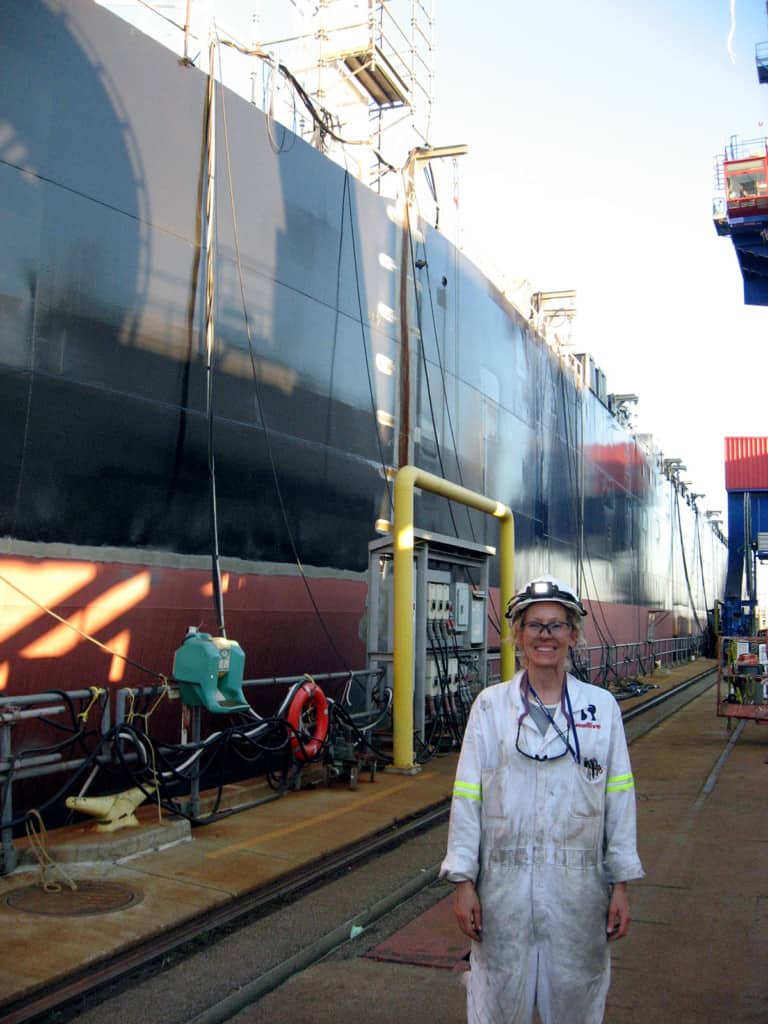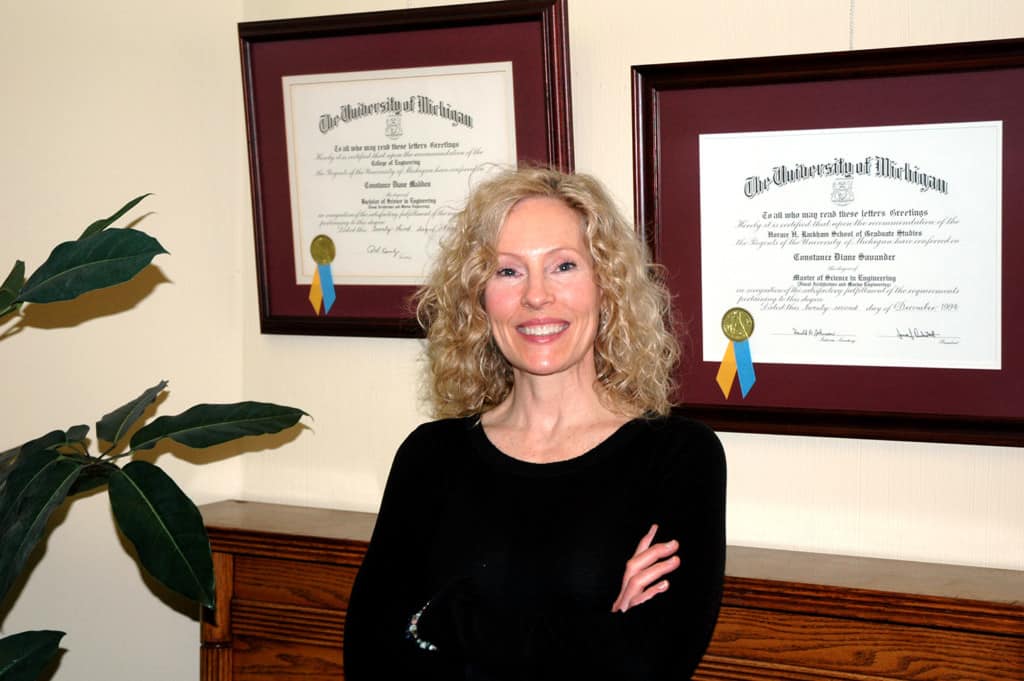CONNIE SAVANDER
Maritime Research Associates

President/Maritime Research Associates, LLC
UM NAME BSE ’91, UM NAME MSE ’94
BIO:
Ms. Savander is a University of Michigan graduate and a prominent, active, and decorated member within the naval architecture and marine engineering community.
CAREER:
As President of Maritime Research Associates, her work is multifaceted. She consults on a broad range of topics including but not limited to: structures, fracture mechanics, hydrodynamic analysis, shipyard support, vetting, safety, and oil spill response activities. Sometimes her work is hands-on, like when she is inspecting vessels for safety and wear. It can also be theoretical in nature, like when she works on a project involving oil spill response activities (spill drills); these precautionary measures require highly trained and experienced naval architects to construct and detail a potential oil spill scenario so that, in the event of an actual disaster, those involved can most effectively fix the problem. Ms. Savander’s work includes both defining such problems and offering consultation for their mitigation.

Her role is engaging both globally and socially as the problems she tackles often take her overseas and allow her to interact with different cultures and occupations, from professional mariners to engineers to shipyard workers. She attests that the work of a naval architect is akin to that of a general practitioner doctor. “A ship, like a body,” she explains, ”requires knowledge of many different disciplines. It draws from structures, dynamics, electrical, chemical, and mechanical engineering, and economics, for example. It follows that naval architects end up being highly marketable engineers because their knowledge base has to be broad and deep enough to tackle complex systems like ships.”
As a naval architecture and marine engineering consultant, Ms. Savander finds her job fulfilling and fun. In her role, she has the opportunity to solve impactful problems like verifying that a vessel is not in jeopardy of pollution or contamination. Furthermore, her work is intrinsically rewarding in that its results are tangible ship designs that make direct impacts on the lives of those that interact with them. “To top it all off”, she says, “it is also an adventurous job and I don’t find myself needing a vacation very often because the job takes me to exciting new places. If the ship I’m working on in the Pacific Northwest that week gets held up, for example, well hey, there is no harm in enjoying the scenery if you are there anyway!”
ADVICE FOR STUDENTS:
Write with clarity so that no one has any questions.